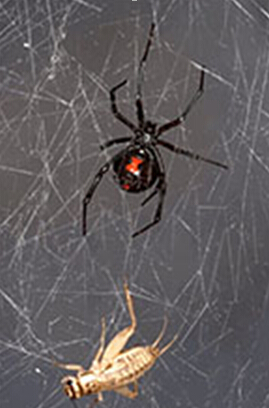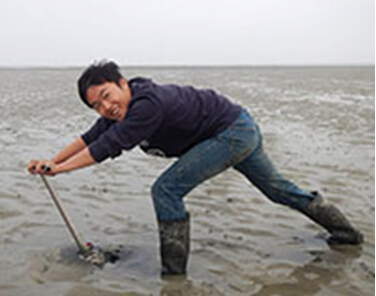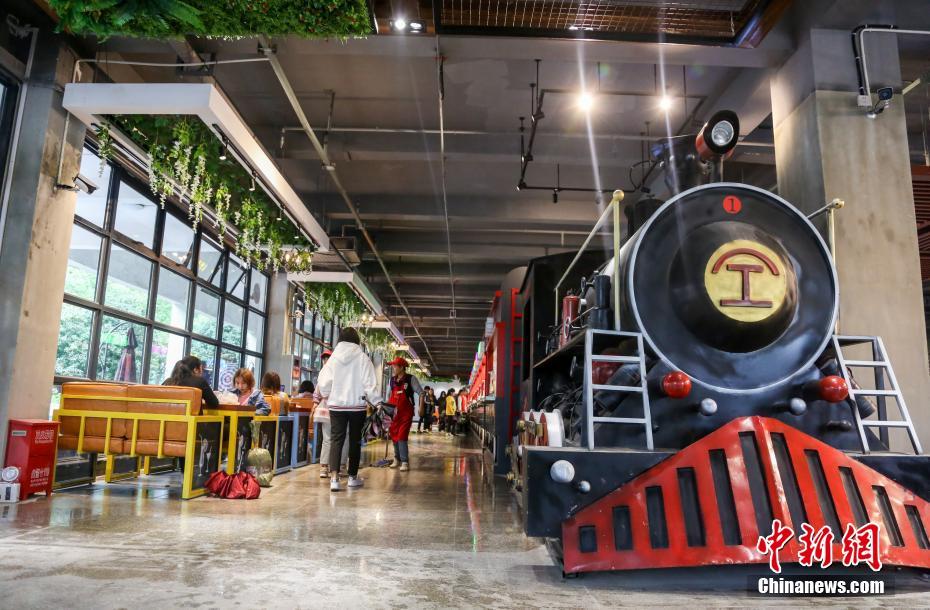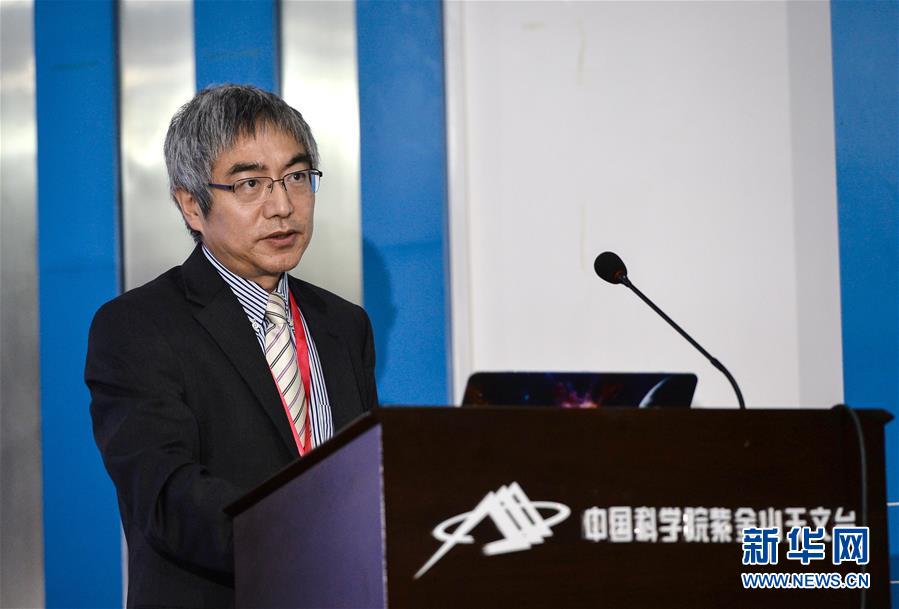
徐聪:环境科学,2014届
徐聪(Charles Cong Xu,2014届环境科学)在圣母大学读本科期间花了大量时间在实验室和户外田野做研究。他曾在Jeffrey Feder博士的实验室做苹果苍蝇蛆试验,并在美国西南部广泛收集水果蝇蛆。他也在David Lodge博士的实验室和博士生Cameron Turner (现已是博士)研究水环境DNA,并在五大湖区湿地为环境DNA研究做田野样本采集工作。
徐说,“本科第一年后的夏天,我记得在内布拉斯加州的一个旧车库里处理鹿鼠,当时我正在哈佛大学做实习,参与协助一项研究的野外工作。我环顾四周,看见到处吊的是蜘蛛网。当时我已在圣母大学Lodge博士的实验室工作了一年,做的是有关的环境DNA的研究。我心想,“如果你能在鱼呆过的水里找到鱼的DNA,那在蜘蛛网上一定也可找到蜘蛛的DNA,甚至他们的晚餐。”
徐和Turner 说服了Lodge博士,得到他的支助来做这个小项目。首先,他们得找到一个地方存放蜘蛛。徐主动联系了当地的Potawatomi 动物园,开始和他们合作这个项目。他自己买材料做了一些蜘蛛盒子,将三个黑寡妇蜘蛛放进盒子里,用蟋蟀喂养,然后从这些蜘蛛网中提炼,复制,排序线粒体DNA。这种DNA能识别蜘蛛与其猎物的种类。这种非入侵式基因取样使生物监测无需直接观察或打扰目标生物。

Scott Camazine 摄
蜘蛛DNA的可测性在多次检测中的结果都是一样的。在蜘蛛及其猎物离开蜘蛛网88天后还能从网上测到它们的DNA。这些结果有助于进一步的实际应用研发,比如环保研究,病害虫管理,生物地理学,及生物多样性评估。但还需要从田野不同地方收集不同种类的蜘蛛做进一步研究,来评估这些研究结果的普遍性。
徐说,“现在回想起来好像也很显而易见,粘粘的蜘蛛网是收集蜘蛛及其食物DNA的 “自然”采样设备。用黑寡妇蜘蛛和美洲蟋蟀做实验,我们发现可用蜘蛛网来识别蜘蛛及其猎物的DNA。我们早就知道蜘蛛网可以粘住小虫子,花粉,灰尘,及任何被风吹起的东西 – 谁知道在蜘蛛网里还能发现什么其它动物的DNA? 蜘蛛网可以广泛应用于生物多样性评估及对侵入性物种,濒危物种,或害虫的环境监测。
收集分析数据以后,徐在Turner 的支持下写了一篇论文,现已发表在《公共科学图书馆PLoSONE》上,这是一个国际开源期刊。你可以免费获取这篇论文。本文最后附上了该文章的全部引文。
徐在本科时就是圣母大学本科生学术参与中心(CUSE)的Sorin学者项目成员。这个项目通过竞争申请,选拔出一批优秀并热爱科研的大一学生。中心在学生大二,大三,大四时帮助他们建立学者群,支持他们的研究和考研目标,并对个人有针对性的辅导。
徐回忆他参与这个项目的情形,“我和CUSE中心的老师们接触很多,常常和其他对热爱科研的同学一起参与有思想有深度的学术讨论。中心资助我夏天到哈佛大学做实习,研究进化基因,并赞助我到犹他州参加全国进化生物学术会议并作学术报告。中心的Thibert博士还帮助审查我的MEME项目申请材料,并提出很有帮助的建议。没有CUSE中心的支持,我不可能发展到今天这样。

徐在荷兰学习(MEME项目的一部分)
徐现在是Erasmus Mundus 进化生物硕士项目的研究生,是哈佛大学和四所欧洲大学一个合办项目。他目前在瑞典的Uppsala大学做有关大熊猫的研究,用非侵入性粪便采样使用基因标记重捕法来预测大熊猫的多样性。下学期,徐将去中国科学院的昆明动物研究所做研究,用采集的血吸虫血样的DNA来识别越南和老挝森林里哺乳动物的种类。你可以从徐的个人网站上了解更多。
徐总结到,“这将表明,科学不在意你只是一个本科生。一个有意思的科学灵感可以来自任何地方,甚至来自呆在车库里的大一学生。”
(欧联华文网)
Citation: Xu CCY, Yen IJ, Bowman D, Turner CR (2015) Spider Web DNA: A New Spin on Noninvasive Genetics of Predator and Prey. PLoS ONE 10(11): e0142503. doi:10.1371/journal.pone.0142503
Originally published by Kathleen Schuler at cuse.nd.edu on November 25, 2015.
Posted In: Science & Engineering
Collecting DNA by spider web - ND alumnus publishes undergrad research
Published: November 25, 2015
Author: Kathleen Schuler

Charles Xu, Class of 2014,
Environmental Sciences
Charles Cong Xu (environmental sciences, class of 2014) spent much of his time as an undergraduate at Notre Dame conducting research both in the lab and out in the field. He worked in Dr. Jeffrey Feder’s lab on the speciation genomics of Rhagoletis apple maggot flies and collected fruits housing maggot flies across the southwestern U.S. He also conducted fieldwork sampling for environmental DNA (eDNA) in the Great Lakes wetlands while working in Dr. David Lodge’s lab on aquatic environmental DNA with PhD student (now Dr.) Cameron Turner.
“The summer after my freshman year, I remember I was processing deer mice in an old garage in Nebraska where I was assisting with fieldwork during my internship at Harvard University,” said Xu. “I looked around and saw there were spider webs clinging everywhere. After a year of working with eDNA in Dr. Lodge’s lab at Notre Dame, I thought to myself, ‘If you can find DNA of fish in the water it’s swimming in, there has to be DNA of spiders and maybe even their dinner on spider webs.’”
Xu and Turner convinced Dr. Lodge to fund a small project. They first needed to find a place to house the spiders. Xu reached out and started a collaboration with the local Potawatomi Zoo. He was able to install spider boxes there that he built from scratch. The team introduced three black widow spiders into the boxes and fed them house crickets to noninvasively extract, amplify, and sequence mitochondrial DNAfrom their spider web samples. This DNA identified the species of both the spider and its prey. This kind of noninvasive genetic sampling enables biomonitoring without the need to directly observe or disturb target organisms.

Credit: Scott Camazine
The detectability of spider DNA did not differ between assays and spider and prey DNA remained detectable at least 88 days after living organisms were no longer present on the web. These results may encourage further studies that could lead to practical applications in conservation research, pest management, biogeography studies, and biodiversity assessments. However, further testing of field-collected spider webs from more species and habitats is needed to evaluate the generality of these findings.
“It’s kind of obvious in retrospect,” Xu said, “but sticky spider webs may be a ’natural’ DNA sampling device for DNA from the spider, and from what it’s been eating. Using black widow spiders and house crickets, we discovered that spider webs can be used to detect DNA of spiders and their prey. ThisDNA can stick around for some months after the spider is gone. We already know that spider webs can trap insects, pollen, dust, and anything else that’s been blowing in the wind —who knows what other creatures’ DNA might accumulate in a spider web? Spider webs could be used in widespread biodiversity assessments and environmental monitoring to look for invasive, endangered, or pest species.”
After collecting and analyzing the data, Xu wrote a paper based on the study with support from Turner. This paper is now being published in PLoSONE, an international open access journal. You can access the article for free. A full citation is at the end of this article.
As an undergraduate, Xu was a member of the Sorin Scholars program through the Center for Undergraduate Scholarly Engagement (CUSE) at Notre Dame. This program identifies through a competitive application process a cohort of exceptionally engaged students at the end of their first years at the University. CUSE then works with this multidisciplinary group during their sophomore, junior, and senior years to help build intellectual community, support research and graduate school goals, and participate in individualized mentoring and programming.
“I had close access to CUSE staff and was able to regularly engage in stimulating intellectual discussions with other students who were equally passionate about research,” Xu reflected on his time in the program. “CUSE enabled me to conduct a summer internship at Harvard University on evolutionary genetics and helped fund me to present research at a national evolutionary biology conference in Utah. Dr. Thibert also helped read over drafts of my MEME application and offered some useful advice. I wouldn’t be where I am today without the support of CUSE.”

Xu in the Netherlands as part of theMEME program.
Xu is now a student in MEME (the Erasmus Mundus Master Pogramme in Evolutionary Biology), a joint program between four European universities and Harvard University. He is currently based at Uppsala University in Sweden working on estimating giant panda abundance using genetic mark recapture from noninvasive fecal samples. Next semester, he will be at the Kunming Institute of Zoology, part of the Chinese Academy of Sciences, working on identifying mammal species in the forests of Vietnam and Laos from DNA of blood collected by leeches. You can learn more at Xu’s personal website.
Xu concluded, “It just goes to show that science doesn’t care if you are just an undergraduate. An interesting scientific idea can come from anywhere, even from a freshman in a garage.”
Citation: Xu CCY, Yen IJ, Bowman D, Turner CR (2015) Spider Web DNA: A New Spin on Noninvasive Genetics of Predator and Prey. PLoS ONE 10(11): e0142503. doi:10.1371/journal.pone.0142503
Originally published by Kathleen Schuler at cuse.nd.edu on November 25, 2015.
Posted In: Science & Engineering





 《信念奠定思想――真理的味道非常甜》
《信念奠定思想――真理的味道非常甜》
